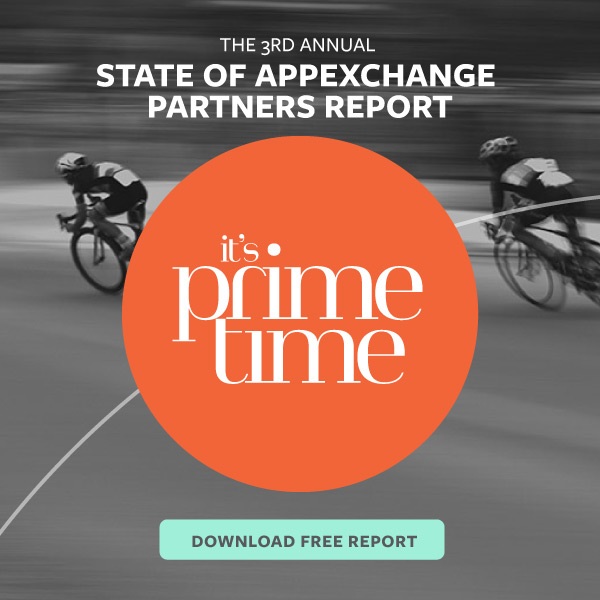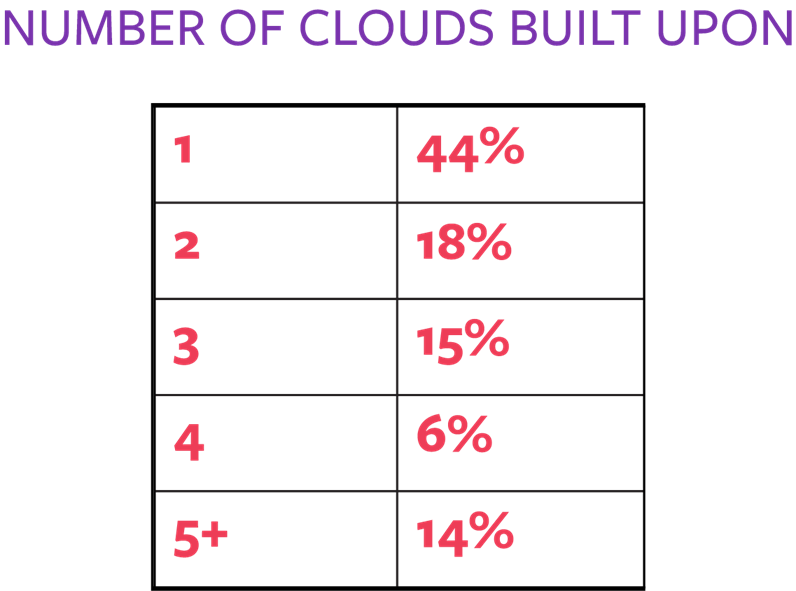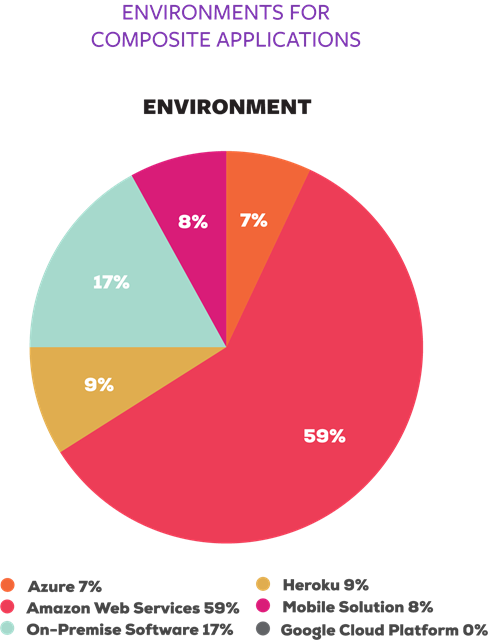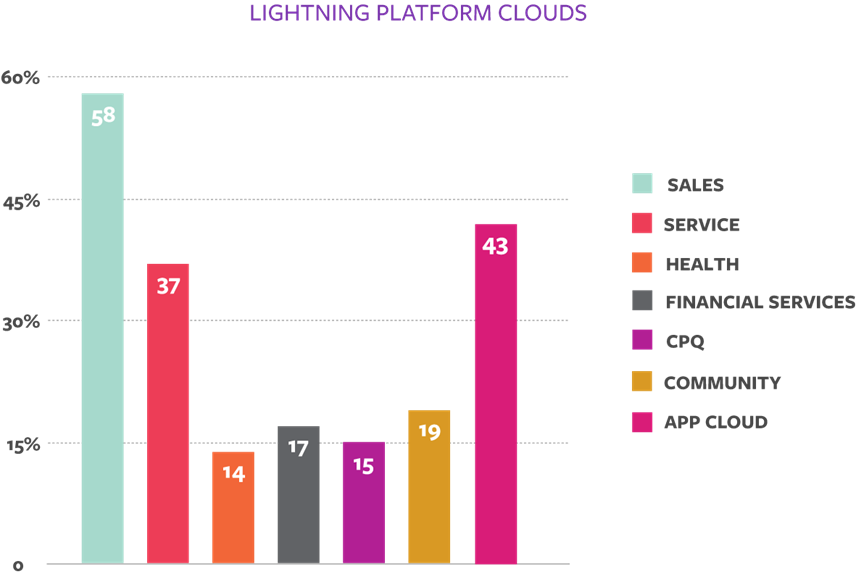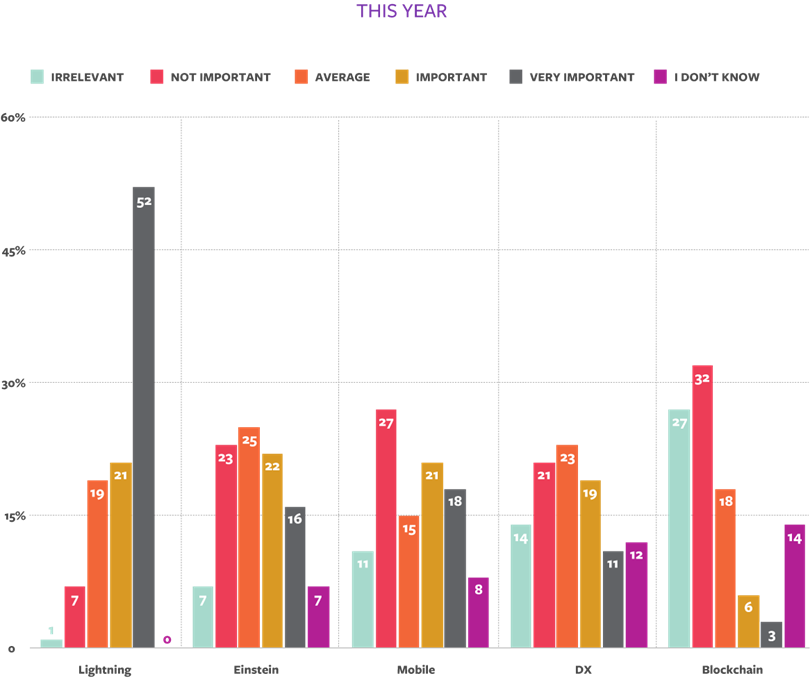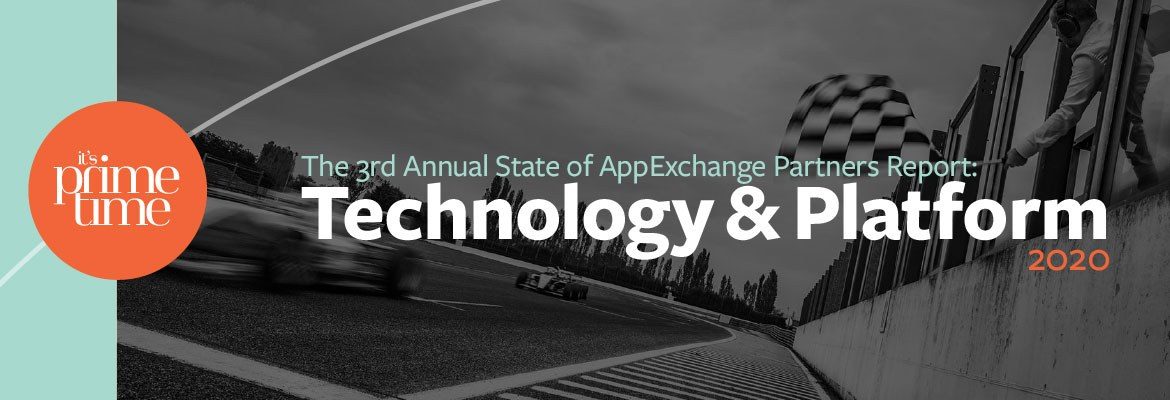
For the third post in our State of AppExchange Deep Dive Series, we’re exploring the Technology and Platform section of the report. You can catch up by clicking the links for Part 1 on Product and Company or Part 2 on Growth.
If you want to read the report in full, click the image below!
Technology and Platform
The Technology and Platform section of the report provides the industry trends on how ISVs are leveraging the technologies available from Salesforce.
Sales Cloud continues to dominate, with 58% of partners choosing it to build on.
However, this is a drop from last year — which is not entirely unexpected with the rise of other industry clouds.
Additionally, we see a slight decrease in partners adopting a multi-cloud strategy (65% to 59%). A multi-cloud approach continues to be valuable for ISVs and customers, even with the increased focus on industries. We are seeing mature, industry-specific ISVs leverage not only industry-specific clouds, like Health Cloud, but also bring in Marketing, Integration, Service, or Sales clouds to enhance their offering.
AWS and Salesforce
For partners with composite applications, Amazon Web Services (AWS) continues to dominate and grow — up 10% from last year.
With the announcement of an expanded strategic partnership at Dreamforce ‘19, we are interested to see how partners will respond, especially with those with Service Cloud offerings.
Salesforce Cloud Breakdown
In our analysis for this year’s report, we break out the importance of the difference between Lighting Platform (force.com) clouds and those that are not.
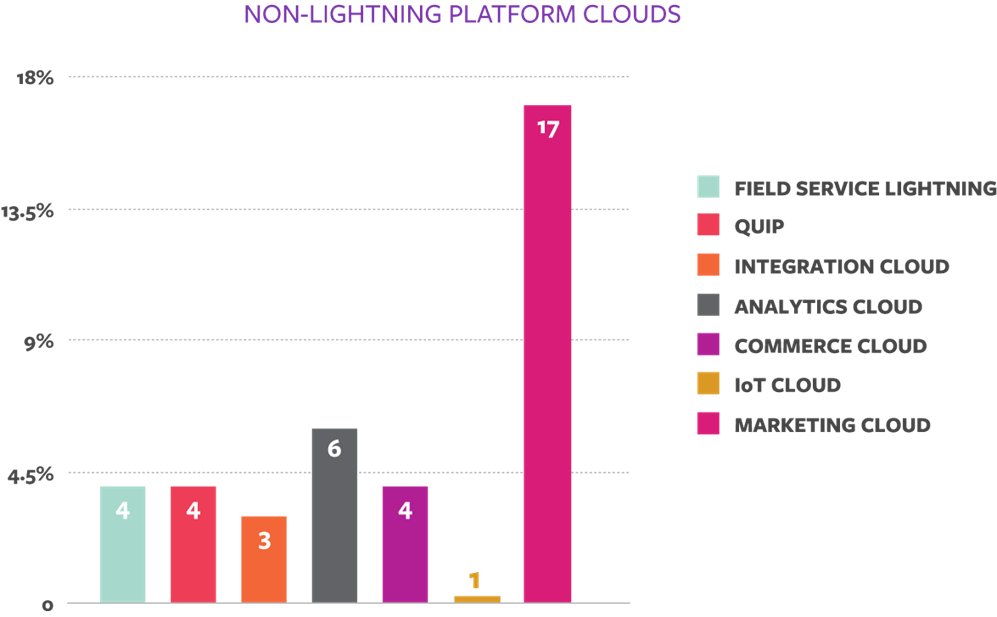
Lightning Platform clouds are leveraged more often than others. With Salesforce’s aggressive M&A strategies, ISVs are starting to build integrations and IP across non-Lightning platforms, but this is often at the pace in which Salesforce enables them — mainly because not all new technology is ready for adoption (e.g., ISV-ready). Typically, when features are first launched, they are not mature enough for broad ecosystem adoption. As time goes on and the underlying infrastructure improves, ISVs adopt the technology into their products.
In looking at the stated importance of technology, we see the trend of ISV-ready emerges. As we called out last year, the longer a feature is in-market, the more importance ISVs place on it.
However, it is not a linear path to adoption. In looking at the trends, Salesforce technologies follow the Forrester Adoption Curve — where there is an initial peak of interest once a new technology releases followed by a cooling and then a gradual incline, which we see with Mobile and DX.
Looking ahead to the penultimate section of our deep dive series, we will be examining Salesforce as a Channel. This post will encompass Salesforce lead sources, channel results, and we unpack the open-response section of our survey.
At CodeScience, we help partners thrive on the Salesforce AppExchange. With 250+ commercial-grade applications under our belt, we help our clients navigate the intricacies of getting their product built, launched, and deployed. If you want to unlock your opportunity on the AppExchange, get in touch!
